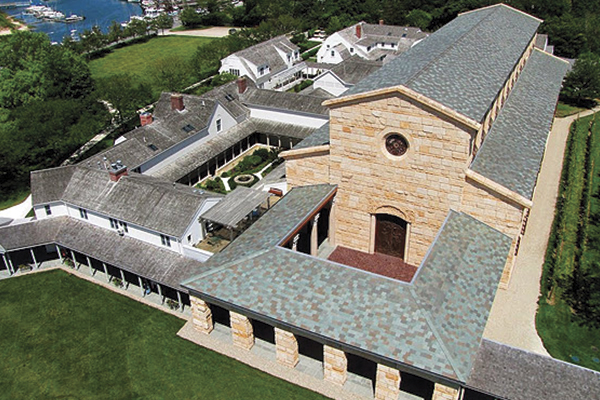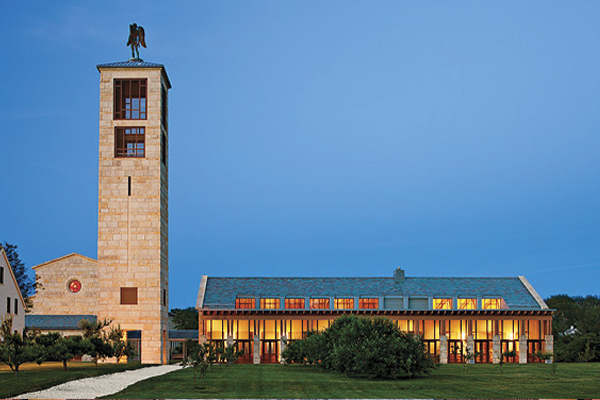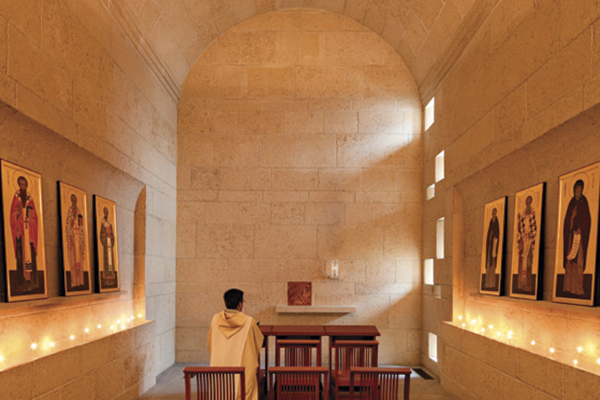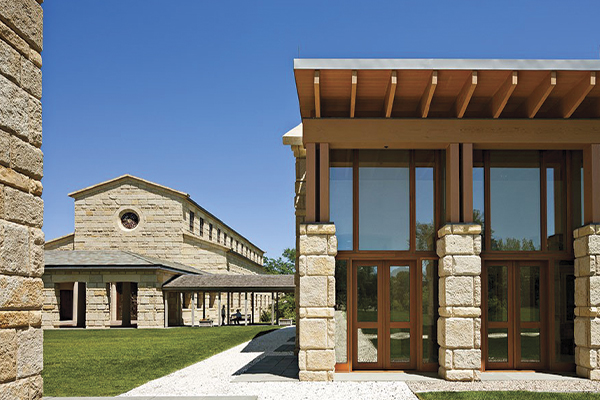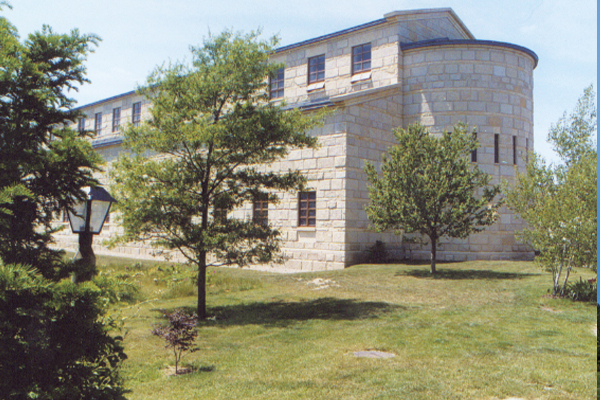Architecture
Nine other buildings encircle the monastic center. A common or green organizes gathering and movement like a New England town common. The Church, Chapter House and Bell Tower are constructed of Minnesota limestone, evoking permanence and the sands of Cape Cod. Support buildings are white New England clapboard and shingle.
William Rawn and Doug Johnston served as Architects for the church and the overall architectural master plan for the Community of Jesus. William Rawn Associates, Architects, Inc. of Boston, has developed an international reputation for a broad range of major cultural, university, and civic buildings that celebrate community and the essential qualities of place. The firm has won seven national American Institute of Architects Honor Awards in the past eleven years, and fifty-six city, state, and regional AIA Awards.
